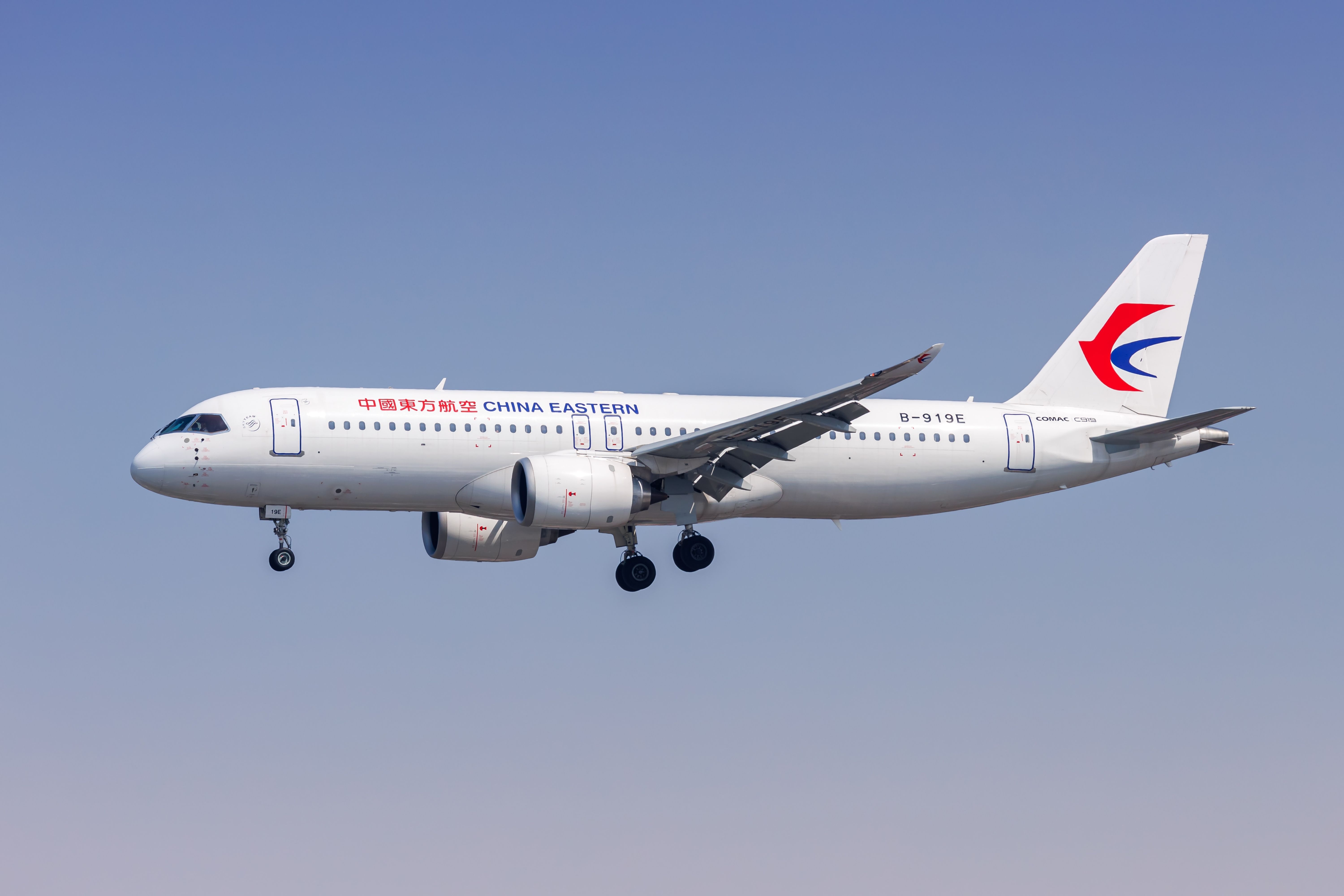Summary European Union Aviation Safety Agency (EASA) representatives have continued to visit COMAC to assess the C919 for its potential certification of the Chinese-built aircraft. So far, the C919's international exposure has been limited. Furthermore, there are risks for Western carriers associated with a potential order or operation of the C919.
The Comac C919 has been inching closer to its certification in the European Union (EU), with the bloc’s regulators visiting their Chinese counterparts to assess the C919, including its simulators. Visiting China According to a report by the South China Morning Post (SCMP) , which cited sources familiar with the matter, representatives of the EU Aviation Safety Agency (EASA) visited COMAC’s facilities in Shanghai, China. The outlet added that the EU regulator’s representatives provided positive feedback about the aircraft, with the visit including sessions inside a full-flight simulator of the Chinese-built narrowbody jet, a potential competitor to the Airbus A320neo and Boeing 737 Max aircraft families.

EASA’s representatives also went onboard the C919 to take a look at the aircraft, the SCMP added. The C919 intends to compete with the well-established A320s and 737s. Minimal international exposure So far, only the Civil Aviation Administration of China (CAAC) has certified the C919, with the aircraft being largely reserved for flights within China.
The C919 has made appearances outside of China, including demonstration flights in Hong Kong in December 2023 and at the Singapore Airshow in February . On June 1, China Eastern Airlines had operated a return itinerary with the C919 from Shanghai Hongqiao International Airport (SHA) to Hong Kong International Airport (HKG), the type’s first official commercial flight outside of mainland China. The flights were operated under the flight codes MU7191 and MU7192, which have not been used since.
The aircraft, registered as B-919F, continued to operate domestic routes within China since then. Data from the aviation analytics company Cirium showed that in August, China Eastern Airlines has scheduled flights with the type to five destinations, including Guangzhou Baiyun International Airport (CAN), Beijing Daxing International Airport (PKX), Shanghai Hongqiao International Airport (SHA), Chengdu Tianfu International Airport (TFU), and Xi'an Xianyang International Airport (XIY). In total, the airline has scheduled 154 weekly itineraries with the C919, amounting to 24,948 weekly seats and 32.
8 million available seat kilometers (ASK). On May 28, China Eastern Airlines took delivery of its sixth COMAC C919 aircraft, still being the only airline in the world to operate the type. Potential market in the West While the certification of the C919 could unlock potential routes to the EU for operators that are nearer the continent – with the maximum advertised C919 range of 5,555 kilometers (2,999 nautical miles) being too short to fly directly from China to the EU – it would be unlikely that any EU-based carriers would opt for the C919.
Especially considering the geopolitical risks associated with the aircraft, as well as the lack of any supporting infrastructure for the time being. Despite the Chinese government, through its media affiliates, touting that the C919 was the pinnacle of the country’s aerospace sector, its engines were made by CFM International, a joint venture between GE Aerospace and Safran Aircraft Engines. Western-based companies, including the tire company Michelin, Collins Aerospace, Honeywell, and others, have supplied other parts for the aircraft.
As a result, if China does not manage to build its independent supply chain, there will always be a risk that the supply of these components will be cut off to COMAC, considering that the US would have to potentially clear the export of dual-use items to COMAC if the geopolitical situation worsened. The US Bureau of Industry and Security (BIS) defined dual-use items as those that have both commercial and military or proliferation applications. According to a supplement to the Code of Federal Regulations (CFR) Title 15, the US has identified several hundred China-based entities that require specific licenses for US-based businesses to sell items to.
While that does not include COMAC just yet, an escalating conflict in Ukraine – with the US already sanctioning Chinese companies for aiding Russia’s war effort in its illegal invasion of Ukraine – or in Taiwan could result in a sudden shortage of parts for the manufacturer of C919. The first batch of C919 pilots is in place, and the delivery of China Southern Airlines' first C919 is approaching..



















